Introduction:
The Honble Supreme Court of India, established under the Constitution of India, is the highest judicial body in the country which came into existence on the 26th of January, 1950. It plays an essential role in protecting citizens' constitutional rights, duties and liberties, delivering justice and upholding the law.
Upholding the Constitution:
Article 32 of the Constitution of India, 1949 (Constitution) gives the right to individuals to move to the apex court to get justice whenever their fundamental rights get hindered. The apex court is given the authority to issue directions or orders for the execution of any of the rights bestowed by the constitution as it is considered the protector and guarantor of Fundamental Rights.
Article 37 of the Constitution recognizes that the fundamental rights mentioned in the Constitution are not directly enforceable in any court of law, but lays down the provisions that guide the functioning of the State (i.e. India).
Interpreting the Constitution:
One of the primary roles of the Supreme Court is to do an interpretation of the provisions of the Constitution and ensure their effective enforcement. The court acts as the last arbiter in constitutional matters, having the authority to do interpretations that maintains and shape the legal structure of India. It has the authority to judicial review, allowing it to overturn or disallow any rule of law or government action that breach the principles of the Constitution.
Landmark cases and judgments by the Supreme Court of India illustrating its role in protecting and upholding the Constitution:
Kesavananda Bharati v. State of Kerala (1973): In this case, the Supreme Court established the doctrine of basic structure, that the Parliament cannot amend the Constitution to destroy its basic structure or essential features. This landmark judgment played a crucial role in protecting the Constitution's integrity and preventing excessive amendments that could undermine its fundamental principles.
Maneka Gandhi v. Union of India (1978): In this case, the Supreme Court expanded the scope of Article 21 (protection of life and personal liberty) and held that the right to personal liberty includes the right to travel abroad. The judgment emphasized that the procedure established by law must be just, fair and reasonable, ensuring that individuals' rights are protected against arbitrary state action.
Shayara Bano v. Union of India (2017): In this case, the Supreme Court declared the practice of instant triple talaq (Talaq-e-bidder) unconstitutional and violative of fundamental rights. The judgment emphasized gender equality and the need to protect the rights of Muslim women against arbitrary divorce practices.
Navtej Singh Johar v. Union of India (2018): In a landmark judgment, the Supreme Court decriminalized consensual same-sex relations by striking down Section 377 of the Indian Penal Code. The court held that sexual orientation is an essential attribute of privacy, dignity and equality, ensuring equal rights and protection for the LGBTQ+ community.
Judicial Activism v. Restraint:
Judicial activism and judicial restraint are two contrasting approaches that courts can adopt while interpreting and applying the law.
Judicial activism refers to the proactive role played by the judiciary in shaping public policy and addressing social issues. It involves a willingness on the part of the courts to go beyond a strict interpretation of the law and actively engage in the development of the legal framework. This approach often involves the court interpreting the Constitution expansively, filling in gaps in legislation and even making decisions that impact the functioning of other branches of government.
Proponents of judicial activism argue that it is necessary to ensure justice and protect the rights of citizens. They believe that the judiciary has a vital role in promoting societal progress and addressing issues that might otherwise be neglected by the legislative or executive branches. By actively interpreting the law, courts can adapt to changing social dynamics and provide remedies for emerging challenges.
However, judicial activism is not without its critics. Critics argue that it can undermine the separation of powers and encroach upon the domains of the legislative and executive branches. They contend that unelected judges should not have the power to make policy decisions, as this stands against democratic principles. Critics also argue that judicial activism can lead to uncertainty in the law, as the courts may frequently depart from established legal precedents.
On the other hand, judicial restraint advocates are for a more limited role for the judiciary. It emphasizes the importance of respecting the separation of powers and giving deference to the elected branches of government. Judicial restraint involves a more cautious and conservative approach to interpretation, where judges limit themselves to the text and original intent of the law. The courts exercise restraint by deferring to the legislature and avoiding overreach into policy-making domains.
Supporters of judicial restraint argue that it preserves democratic principles by allowing elected representatives to shape public policy. They contend that judges should not be activists, but rather impartial arbiters of the law. Judicial restraint ensures that the courts maintain their independence without overstepping their bounds and encroaching upon the prerogatives of the other branches of government.
However, critics of judicial restraint argue that it can lead to stagnation and the perpetuation of unjust laws. They argue that there are instances where the courts must step in to rectify legislative or executive actions that violate constitutional rights or fail to address pressing societal concerns. They believe that strict adherence to judicial restraint can limit the courts' ability to correct injustices or protect minority rights.
In practice, the Supreme Court of India has adopted both judicial activism and restraint, depending on the context and the specific issues at hand. The court has played an active role in expanding and interpreting fundamental rights, addressing social injustices and shaping public policy in certain cases. At the same time, it has also demonstrated restraint by deferring to the legislature and executive in matters that fall within their purview.
Balancing judicial activism and restraint is a delicate task that requires judges to carefully consider the constitutional framework, the principles of democracy and the specific circumstances of each case. It is an ongoing debate within the legal and academic community, and the approach taken by the courts is ever-evolving. Ultimately, finding the right balance between activism and restraint is crucial to ensure that the judiciary effectively fulfils its role as the protector and warden of the Constitution while respecting democratic principles and the separation of powers.
Public Perception and Accountability:
One important aspect that deserves attention when discussing the role of the Supreme Court of India as a protector and warden of the Constitution is the issue of public perception and accountability. While the court holds immense power and authority, it is crucial to maintain public trust in the judiciary to ensure the legitimacy of its decisions.
Public perception plays a significant role in the functioning of the judiciary. The Supreme Court's credibility and reputation are built upon the perception that it operates impartially, free from any external influence or bias. Any perceived deviation from this ideal can erode public confidence in the court and its ability to uphold justice.
Accountability is another essential element in maintaining public trust. The judiciary must be held accountable for its actions and decisions, just as any other branch of the government. While the Supreme Court is autonomous and enjoys independence, it is equally crucial to ensure transparency and mechanisms for holding the court accountable for its judgments and processes.
To enhance public perception and accountability, measures can be implemented to promote transparency in the court's functioning. This includes making judgments and court proceedings more accessible to the public, allowing for greater scrutiny and understanding of the court's decision-making process. Additionally, mechanisms such as effective grievance redressal systems and ethical standards for judges can contribute to fostering public trust and accountability.
The Supreme Court itself has recognized the importance of accountability and transparency. It has taken steps to ensure greater openness through initiatives such as live streaming of court proceedings and making judgments available online. These efforts aim to bridge the gap between the court and the public, fostering a sense of inclusivity and ownership of the judicial process.
Furthermore, public perception and accountability also depend on the responsiveness of the court to the changing social, economic and political dynamics of the country. The court's ability to adapt to evolving challenges and address emerging issues in a timely manner enhances its legitimacy and public confidence.
However, it is important to acknowledge that public perception can be subjective and influenced by various factors. Disagreements and criticisms are inevitable in a diverse democracy like India, and the court's decisions may not always align with the expectations of every individual or group. It is therefore crucial for the court to strike a balance between fulfilling its constitutional obligations and considering the legitimate concerns and expectations of the society it serves.
In conclusion, public perception and accountability are vital components in ensuring the effectiveness and legitimacy of the Supreme Court as the protector and warden of the Constitution. By promoting transparency, responsiveness and ethical conduct, the court can strengthen public trust and confidence in its role as the guardian of justice and the rule of law.
Balancing Fundamental Rights:
While the Constitution guarantees various rights and freedoms to individuals, it is essential to strike a balance between these rights and competing interests.
The court faces the challenge of reconciling conflicting rights or situations where the exercise of one person's rights may infringe upon the rights of others or the larger public interest. For instance, the right to freedom of speech and expression may clash with considerations of maintaining public order or preventing hate speech. Similarly, the right to privacy may need to be balanced with the legitimate interests of national security or law enforcement.
In such cases, the Supreme Court plays a crucial role in carefully examining the circumstances and applying the principles of proportionality and reasonableness. It must weigh the competing rights and interests involved, considering the specific context and the potential impact on society as a whole.
The court's approach to balancing fundamental rights is not static and may evolve over time. It relies on precedents, legal principles and societal values to determine the appropriate balance in each case. Through its judgments, the court establishes guidelines and standards that ensure the protection of fundamental rights while also recognizing the necessity of limitations in certain circumstances.
The Supreme Court's task of balancing fundamental rights requires a nuanced understanding of the complexities and nuances of each case. It must carefully analyse the facts, consider the potential consequences, and make decisions that strike a fair and just balance. This process often involves extensive deliberation, legal reasoning and a thorough examination of legal and constitutional provisions.
Moreover, the court's decisions in balancing fundamental rights have a significant impact on the development of constitutional jurisprudence in India. They shape the interpretation and application of fundamental rights, clarifying their scope and limitations in various contexts.
However, the task of striking a balance between fundamental rights is not without challenges. It requires the court to navigate through a multitude of competing interests and interpret constitutional provisions in a manner that upholds the core principles of the Constitution. Additionally, evolving societal dynamics, changing technologies and emerging issues necessitate a continual reassessment of the balance between rights.
In conclusion, the Supreme Court's role in balancing fundamental rights is crucial in maintaining a harmonious and just society. By carefully weighing competing interests, considering the specific circumstances of each case, and interpreting constitutional provisions, the court strives to protect and uphold fundamental rights while also safeguarding the broader welfare of society. Through its decisions, the court contributes to the ongoing development of constitutional jurisprudence, ensuring that the delicate balance between rights is preserved in an ever-changing world.
Protecting Fundamental Rights:
This apex court work for safeguarding the fundamental rights of the citizens given by the Constitution, like protecting freedom of speech and expression, rights to life and personal liberty, equality before the law, and protection against unlawful activities. Through landmark precedents, the same court has expanded the scope of fundamental rights, ensuring their applicability in different cases.
Preserving the Federal Structure:
India is a federal country, with a division of powers between the central and state governments. The apex court acts as a ward of the federal structure of India, ensuring that the responsibilities and powers of the central and state governments are sustained. It resolves disputed cases between the centre and the states, maintaining and protecting the unity and integrity of the nation.
Curbing Executive Excesses:
The apex court serves as a check on the powers of the executive branch of the government. It prevents executive excesses and abuse of power by ensuring that government actions and policies are in line with constitutional provisions. The court's power of judicial review allows it to strike down laws or actions that are arbitrary, unreasonable, or violative of constitutional principles.
Guardian of Social Justice:
The apex court of India has given its contribution to upholding the provisions of social justice mentioned in the Constitution of India. It has championed the cause of marginalized sections of society, including the Dalits, women, religious minorities and other disadvantaged groups. Through its judgments, the court has struck down discriminatory practices, advanced gender equality and promoted inclusivity.
Conclusion:
The Honble Supreme Court of India, has the supreme power to control and protect the infringement of the rights, duties and liberties of the people of India, upholding the law and preserving the sovereignty and integrity of the Constitution of India. Through its precedents and interpretations, this court wards that the provisions given in the Constitution will be followed by the people at large of India. As the apex arbiter of constitutional matters, the apex court acts as a protector against executive excesses, champions social justice, and preserves the countrys federal structure. Its role as the warden and protector of the Constitution is essential in maintaining the democratic fabric of India and ensuring justice for all.

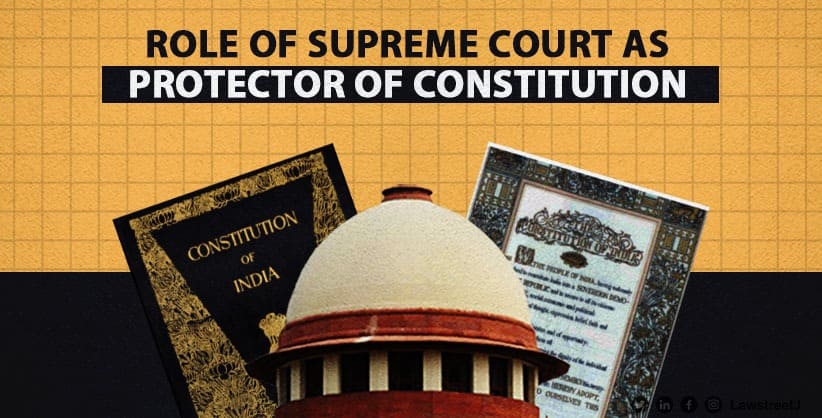
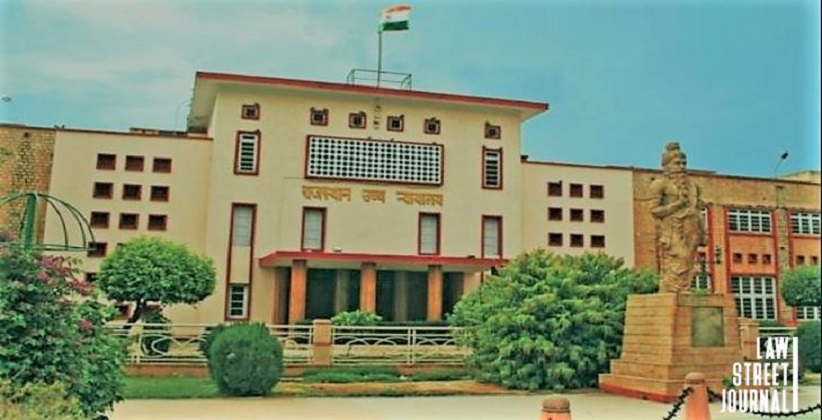
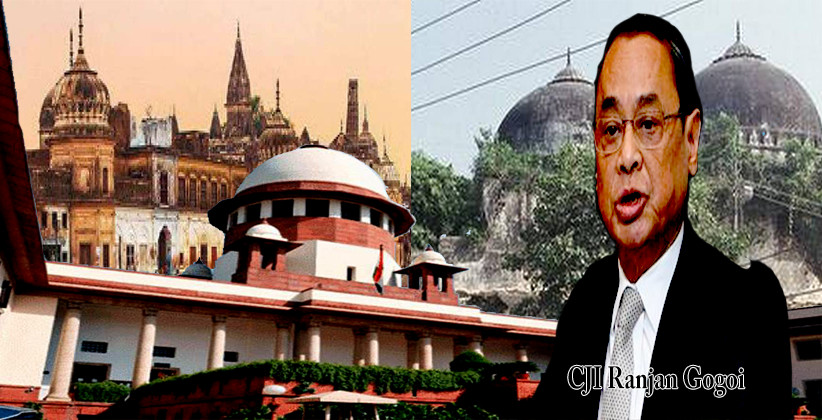
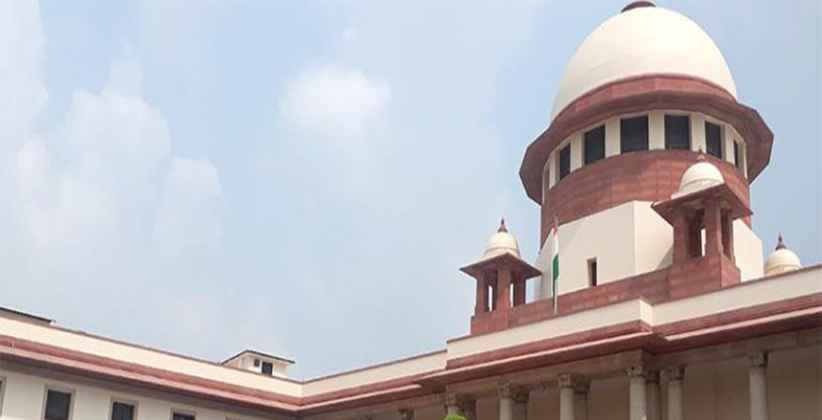
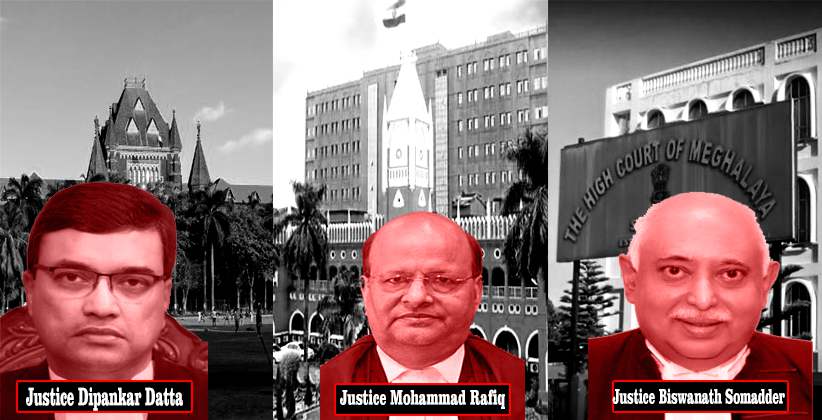
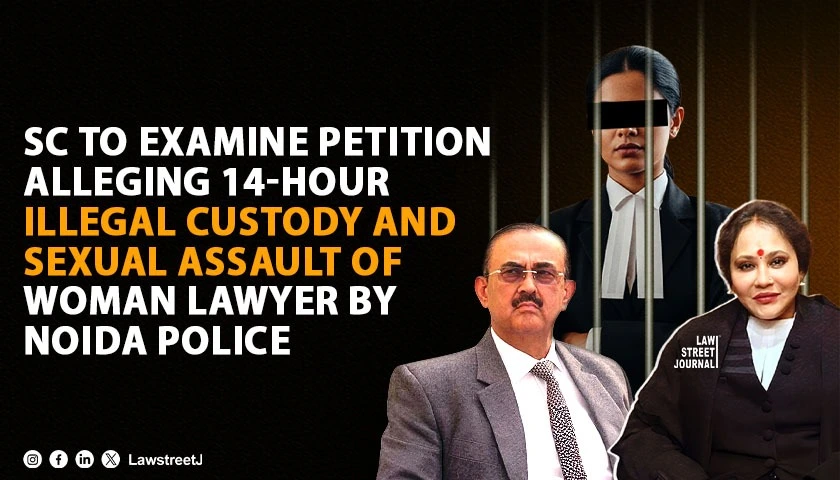

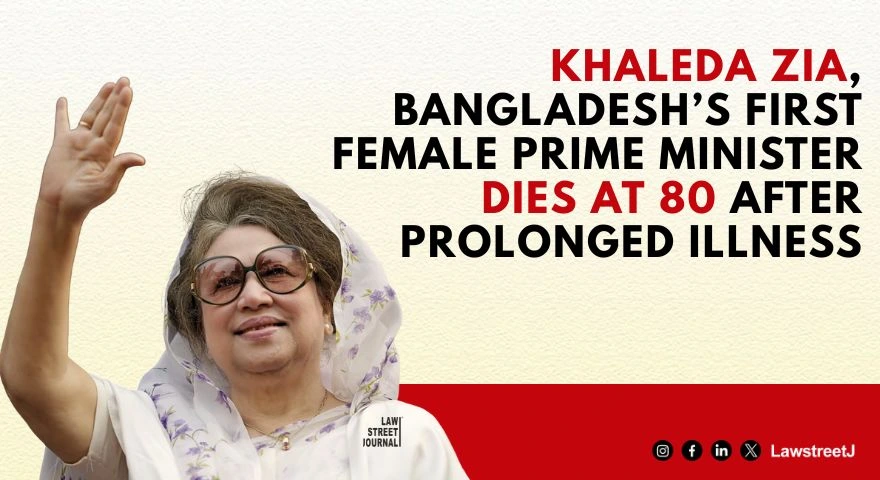
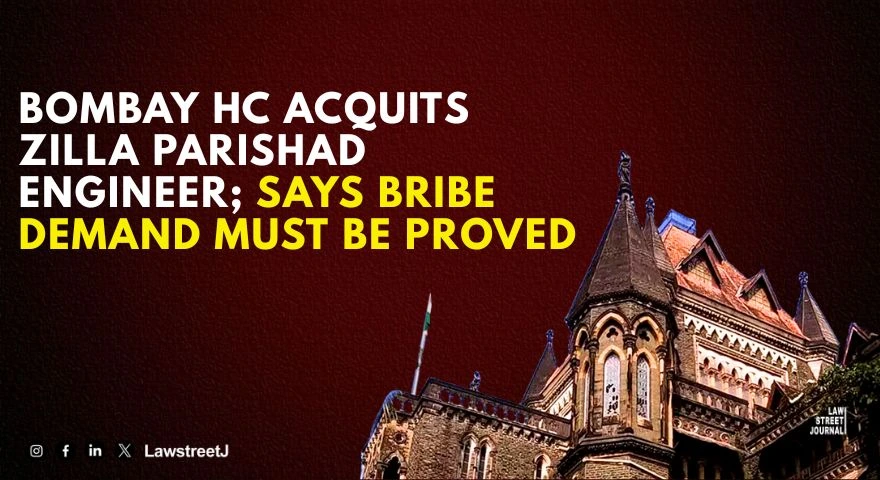

Pankaj Dec 01, 2023
Hi, thank you for writing this informative blog, It helped us to know the exact term of this topic and when to use it. We would be waiting for your upcoming blog. If anyone looking for more details on same topic then please visit us at https://aggarwallawchambers.com/the-role-of-supreme-court-as-a-guardian/ Or give us a feedback. Thank You